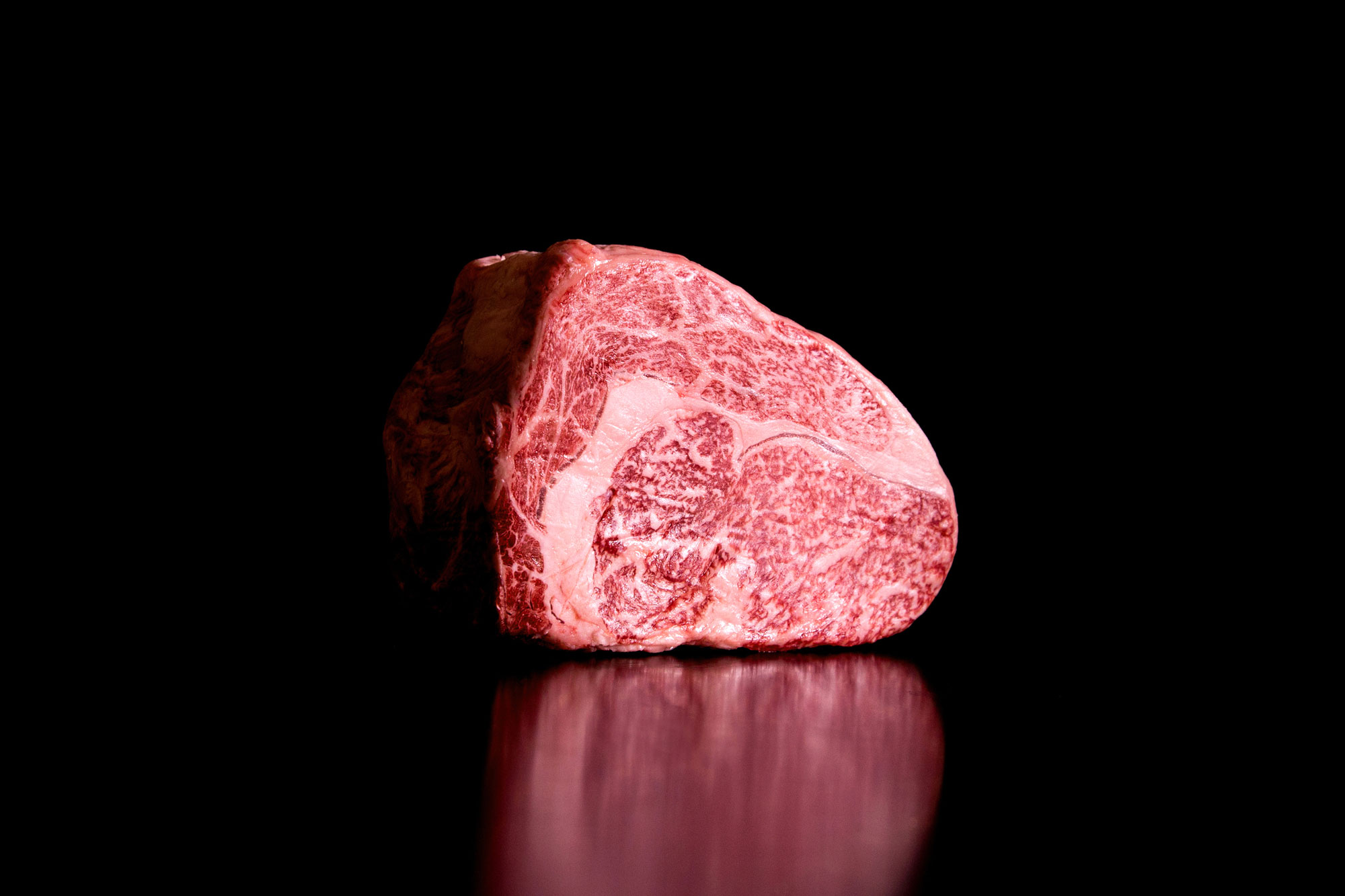
“Wagyu” means “Japanese Cow.” Today, the Wagyu breed is considered a Japanese heritage animal and is protected from further exports to preserve the breed based on Japanese breeding and feeding methods. Cattle arrived in Japan around 200AD from northern China and were used exclusively as draft animals in agriculture and transportation. This was primarily due to early Buddhist influences that made eating meat taboo from the 6th century until the late 19th century.
In 1868, the Meiji Restoration ushered in Western influences, including dietary changes. In 1872, Emperor Meiji publicly ate beef, ending centuries of taboo and lead to a surge in beef consumption.
Between 1868 and 1919, Japan began importing cattle breeds from around the world to meet its consumption demands as well as breeding needs. Imported breeds were the Aberdeen Angus, Holstein, Shorthorn, Brown Swiss, Simmental, Braunvieh, and Ayshire. These breeds were crossbreed with indigenous cattle to improve meat and milk quality. By 1919, this practice ended as the Japanese considered the crosses as inferior. From then on, the goal was to better the breed as it had been developed up to then. To emerge from these efforts were four distinct breeds that today represent the Wagyu breed of cattle.
Three of these breeds became officially recognized in 1944 and the herd books were closed to further crossbreeding to preserve genetic purity.
Japanese Black become the dominant breed after WW2 because of its marbling, meat tenderness, and adaptability as an agricultural animal. There are 5 major bloodlines that dominate the breed. Tajima from the Hyogo Prefecture; Shimofuri from the Kyushu region; Kedaka from the Tottori Prefecture; Fujiyoshi from Hiroshima region; and Okudoi from the Kochi Prefecture.The famed “Kobe” beef is beef that are raised solely in the Hyogo Prefecture and Tajima bloodline. It is famous for fine marbling and a small frame. Developed through crossbreeding native cattle with Braunvieh, Simmental, Devon, and Shorthorn during the Meiji Era. Its coat color varies from dark black to a dark-brown shade.
Japanese Brown is the second most dominant breed and represents about 5% of the Japanese meat market. Developed through crossbreeding native cattle with Korean Hanwoo, Simmental, and the British Devon. Its coat is Reddish-brown in color, its meat is leaner in fat, but still tender and flavorful. Balanced yet less intense marbling than the Black, but still of high quality with a milder taste than its other Wagyu counterparts. Its frame is larger and meat yields are higher.
Japanese Shorthorn represents less than 1% of the Wagyu breed that was developed by crossing native cattle with the Shorthorn, Ayrshire, and Devon breeds in the early 1900’s. Its coat is Red, roan, or reddish with white patches and its meat is lean, but prized for its rich, beef flavor and high protein content. The Shorthorn was added as a registered breed in 1957.
Japanese Polled is the rarest Wagyu breed that was developed by crossing native cattle with the Aberdeen Angus in the early 1900’s. In 2008, there were only 132 left in the Yamaguchi Prefecture and are now protected by the Japanese Polled Public Corporation. Its numbers have steadily increased since, allowing local consumption only. Its coat is solid black like the American Angus, its meat is lean, darker in color, and firm with a stronger beefier taste.
During the period of 1976-1997, up to 200 fullblood Wagyu were allowed to be exported before the Japanese Government declared the Wagyu a “National Treasure” and banned further exports.
Since locking of the herd books in 1944, Japanese farmers selectively breed their herds to promote the most desirable traits like intramuscular fat, milking capacity, ease of birthing, as well as size. They have also attempted to remove any animals from the gene pool that exhibit undesirable traits from being passed down. To help differentiate local herds, the Government allowed Regional Branding under strict guidelines. This is how we get “Kobe” beef. To be able to call your beef “Kobe”, your cattle must be genetically “Tajima-gyu. Born, raised, and slaughtered in the Hyogo Prefecture. Must achieve a yield grade of A or B and a Meat quality grade of 4 or 5. Its marbling score must be 6 or higher with a carcass weight of under 470kg. Finally, it must carry the certification seal for the Kobe Beef Marketing Association.The other regional brands must meet similar standards.
For a more detailed history of Wagyu, click on the link here. It will take you to the Wikipedia page for Wagyu and be sure to check out the Notes section for other references.
http://en.wikipedia.org/wiki/wagyu
An additional resource can be found at: https://www.rocking711.com/chronilogical-history-of-all-wagyu-animals-exported-from-japan/ will detail the history of all the animals exported to the US or Canada.
At Mossyrock Wagyu, we currently only raise Fullblood Wagyu. We are working on an F1 program, to be announced at a future date.
GET 10% OFF YOUR FIRST ORDER
